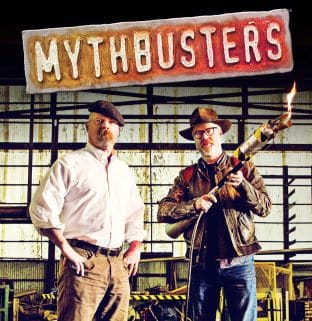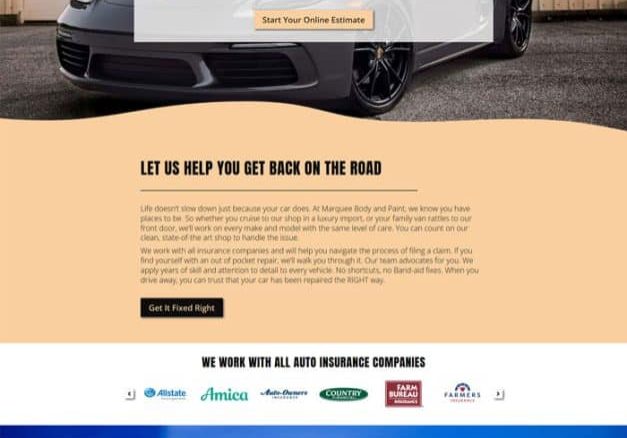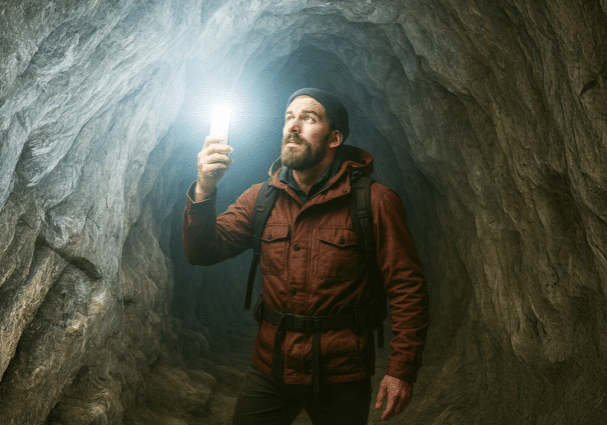The Best Quotes About Branding and the Myths
June 3, 2025

Branding. Toss this buzzword around and you’ll flood your basement with all kinds of advice. Everyone says it’s important, but not everyone really knows what it means. So, where do you begin? Pause for a minute. Let’s take a closer look at some of the most common statements about branding. We’ll sort through, keep the good and toss the bad. Better yet, let’s put them to the test.
In the early 2000s, the Discovery Channel aired a popular show called MythBusters. Led by Adam Savage and Jamie Hyneman, they used science experiments and data to test (and blow up) favorite myths. Why not use the same strategy when it comes to marketing your business? In the spirit of summer building projects, let’s do a little demolition. Using proven data, and a little experimentation, we can blow up the bad advice and replace them with the best quotes about branding. We’ll sweep away the ashes using solid science and proven strategy. (Ah, do you feel that demo-day tingle?)
Grab your hard hat and sledgehammer! It’s time to bust some branding myths.

Myth #1: Branding is Your Logo and Color Palette.
The Data: While logos and colors are vital for brand recognition, they are just the tip of the iceberg. “A consistent brand color palette can improve brand recognition by up to 80%.” But more importantly, “a positive customer experience leads to a 73% increase in loyalty and sales.” (Monique Solomons, “100 Branding Statistics, Global Impact, and Consumer Perception,” Linearity, July 14, 2023).
The Bust: Replace the myth with the following quote: “Your brand is what other people say about you when you’re not in the room.” – Jeff Bezos
Let’s be real. Your logo’s important. It forms a snapshot, the first impression of your business. Your color scheme shares even more tidbits about who you are. But your brand encompasses more than visuals; it’s the experience you give your clients and the emotional connections they make. Think about all five senses. It’s the tone of voice your clients hear in emails and marketing campaigns. The warm and welcoming lighting in a storefront display, or the harsh fluorescent panel that buzzes overhead. The freshness of your authenticity or the stink of B.S. when you seem slimy. Your brand gives a vibe when people walk through your doors, in-person or online. What taste lingers when your customers leave? It’s EVERY interaction. How is your checkout process? Are your products in stock? Do you surprise and delight?
You could have the slickest-looking logo in town, but if your team looks bored or dismissive, and your product disappoints, that logo is just lipstick on a letdown. Branding starts where the customer experience begins, not in the design files on your desktop.
You could have the slickest-looking logo in town, but if your team looks bored or dismissive, and your product disappoints, that logo is just lipstick on a letdown. Branding starts where the customer experience begins, not in the design files on your desktop.
The Takeaway: Your brand isn’t your trademarked “stuff.” It’s every experience people have with your company. The logo might intrigue them a little, but their experience with you invites them to come back.

Myth #2: You Have Total Control Over Your Brand.
The Bust: Replace the myth with the following quote: “A brand is no longer what we tell the consumer it is – it is what consumers tell each other it is.” – Scott Cook
You don’t own your brand in the way you think you do. People talk. They write reviews, post TikToks, leave comments, tell their coworkers, and vent to their group chats. Every word shapes your brand’s reputation.
While you can’t control the conversation, you can absolutely control the experience. Think of it like cooking. You don’t get to pick what people say about the meal at the table, but you do choose the ingredients, the recipe, the care, and the presentation. If you do your job right, the conversation takes care of itself.
The Takeaway: You’re not the ONLY author of your brand story. Your customers are co-writers. Interact with them in a way only YOU can. Give them enough to gush about over lunch with the girls.

Myth #3: If You Build It, They Will Come.
The Data: Emotional connections with customers can lead to a 306% higher customer lifetime value. Moreover, emotionally engaged customers are willing to spend twice as much, with an 81% higher likelihood of making a purchase. (Joshua, “25 Emotional Marketing Statistics – Key Facts + Case Study,” Ecombusinesshub.com)
The Bust: Replace the myth with the following quote: “People do not buy goods and services. They buy relations, stories, and magic.” – Seth Godin
Let me give it to you straight: Creating a phenomenal product is NOT the same as building a phenomenal brand. Simply existing won’t make it happen. You could serve up the most mouthwatering cheesesteak sandwich, design the most charming space, or sell the highest quality gear, but if no one knows about it, well. . . game over. Your customers need to connect with you and remember you, or you’re just yelling into a void.
People remember how you made them feel, not just what you sold them. If you want loyal customers, don’t try to impress them; understand them! Listen more without getting defensive. Add a personal touch and increase one-on-one interactions. How can you better “show up” for your customers? You build a relationship as you’re there when they need you.
The Takeaway: Be good at what you do. That’s definitely step one. Step two: Show your customers that you understand them personally. That’s what sticks. Branding connects on an emotional level, not over a simple transaction.

Myth #4 You Need to Sound Professional To Be Taken Seriously.
The Data: Skip the college-level terminology. Scientists found that when content is written with shorter, simpler, and concrete words, readers are 25% more likely to finish reading. Clear and easy-to-understand language helps readers process information quickly, keeping them engaged until the end. (“3 Rules for Writing, According to Science,” The Daily Carnage, October 17, 2023) Besides, authenticity and emotional engagement often trump formality. Ads with purely emotional content perform twice as well (31% vs 16%) compared to those with only rational content. (Roger Dooley, “Emotional Ads Work Best,” neuromarketing)
The Bust: Replace the myth with the following quote: “People don’t buy what you do; they buy why you do it.” – Simon Sinek
Somewhere along the line, someone told small business owners that “professional” means sounding like a lawyer in a suit. But people don’t connect with jargon. They connect with people. Robotic voices using cold, buttoned-up language don’t sound trustworthy. “Professional” DOES NOT mean impersonal.
This isn’t an excuse to go sloppy joe. Tighten up your spelling and grammar and look presentable from every angle. How do you know if your copywriter’s content hits the mark? People in your industry will recognize that you are an expert and people NOT in your industry will still know what you’re saying. Drop the formalities. People can sniff out a fake. Be real. Be approachable. A simpler message is stronger than one full of semicolons.
The Takeaway: Speak like a person, not a press release. According to the numbers, you’ll see a greater response.
Branding is a lifestyle.
That’s NOT a myth. That’s honest-to-goodness truth.
The Data: “An impressive 77% of individuals are willing to recommend a business to a friend after a positive experience” (Bruce Temkin, “CX Leads to Recommendations,” LinkedIn, February 23, 2017).
The Takeaway: “Every interaction, in any form, is branding.” – Seth Godin
Your font choices matter. Your logo color strikes a chord. But the experience – that’s the heart of branding. Their interactions with you. It’s the phone call to check on your recovery. It’s a hand-written thank you card. It’s every tiny detail that proves you care.
So the next time someone tells you branding is just a logo, or needs to sound more professional, pull out your blow torch! Blow that myth to smithereens!
Want help building a brand that people actually remember? You know where to find us.
-The JamboJon Team.

















